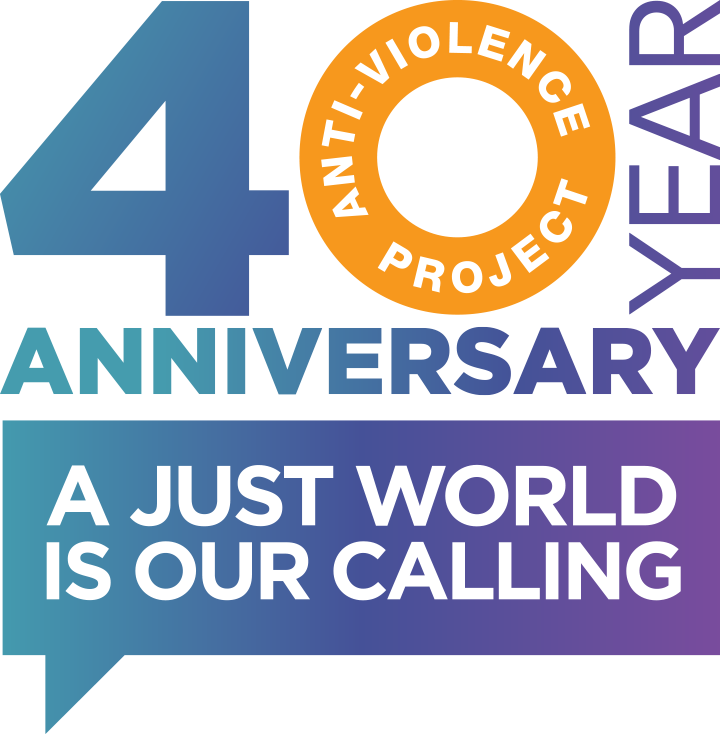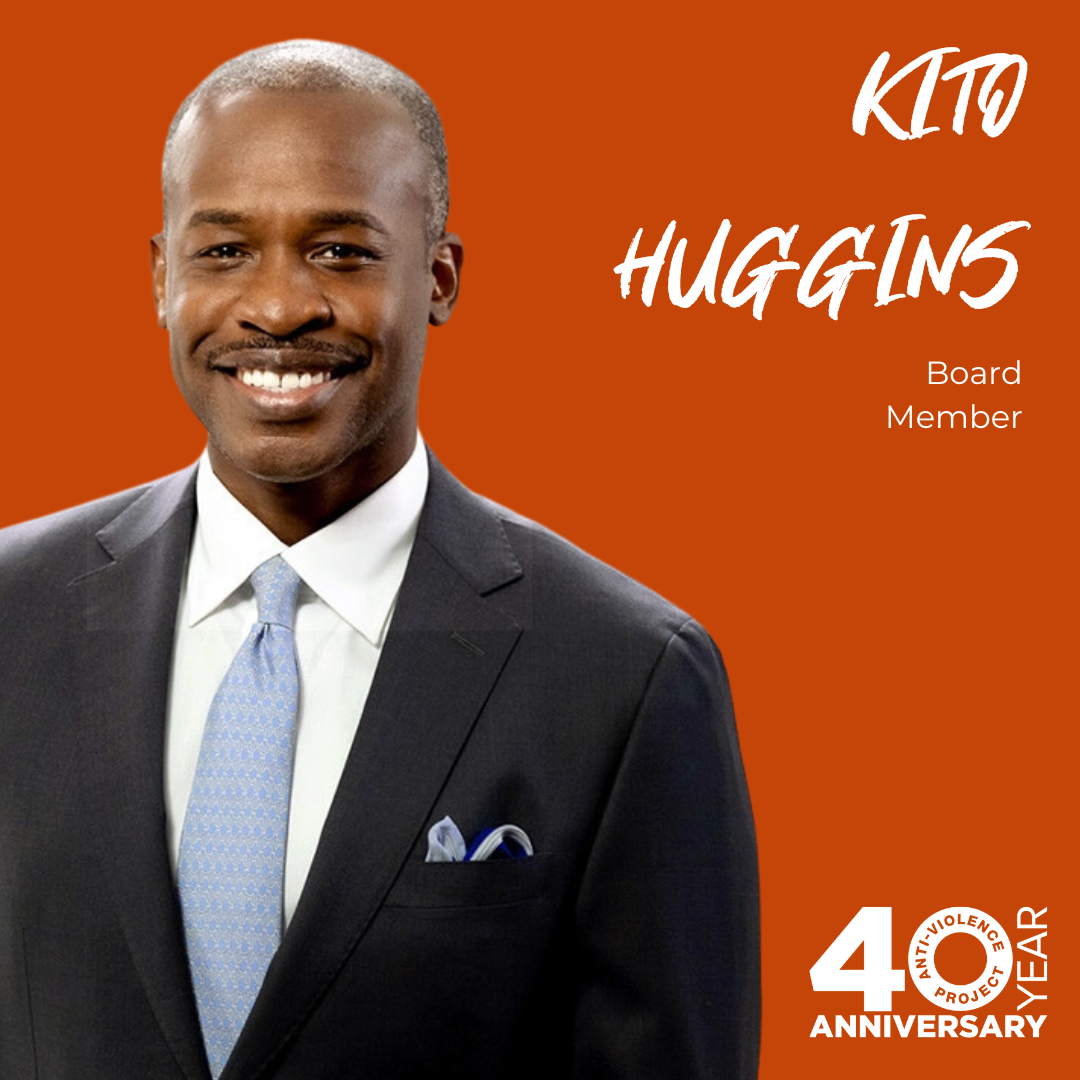
This interview has been shortened and condensed for clarity.
Bea Hanson has been an advocate for victims of violence for over three decades. She served as AVP’s HIV-Related Violence Program Coordinator in the 1990’s, and later worked as the Chief Program Officer for Safe Horizon. Later, she served as the Principal Deputy Director of the United States Office on Violence Against Women for six years. Currently, she is the Executive Director of the New York City Domestic Violence Task Force.
For our 40 Change Makers profile, Hanson talks about how violence affected HIV-positive people in New York City during the AIDS crisis, her early days working with AVP, and the queer community’s concern behind discussing violence between LGBTQ individuals while trying to better their public image.
How did you first get involved with AVP?
I was the HIV-Related Violence Program Coordinator in 1990, and I found out about AVP through an ACT UP meeting. I had been doing community organizing in the Bronx, and I had just finished a degree in social work and was looking to see what was next. The AIDS crisis was really big then and this job came up, and I decided that I was going to apply for it.
Can you describe the need for an HIV-Related Violence Program Coordinator at AVP?
In New York at the time, HIV was killing people, and there were no medications that were available for folks. You looked at people as you’re walking down the streets in the West Village and Chelsea who were just skin and bones or people with lesions on their bodies. People were dying every day. And we had a lot of problems in the city, where people would go to hospitals and the staff would leave food trays out in front of the room. They wouldn’t want to go in the room because they were afraid of contracting HIV.
We had people who would come into the Village and Chelsea and beat up gay men who looked weak and looked like they had HIV. I had a client who got severely kicked and punched. He had no weight on him, and they had to wire his jaw shut because his jaw was busted, so he lost even more weight because he couldn’t open his mouth to eat. And so, the whole point of the project was to get people to understand how people with HIV were particularly impacted by violence, including in their relationships. We had a client who was not out to family, and his partner wanted to out him to his family about being HIV positive and also being gay, and then was very physically abusive with him, even threatening him with knives. We had to help him get out of that relationship.
When you talk about HIV-related violence, people were being attacked for being HIV positive, and then the kind of discrimination that people faced in terms of getting apartments or being able to be seen in hospitals and by doctors. So, AVP was providing training around that and then working directly with clients.
Do you have a most memorable experience with AVP?
Probably the most memorable experience is during the case of the serial killer we were working on. I was with Matt Foreman (former AVP Executive Director) and we hired one of those trucks that go up and fix electric stuff. We took mannequin body parts and we put red all over them, and we went down by City Hall really early in the morning and flung them over the light poles and all over the place. So, downtown was covered with these bloody body parts. They didn’t last very long though. We did some in the West Village and they lasted a little bit longer. That was fun.
When I was at Safe Horizon, we worked with AVP to set up the first shelter that would accept LGBT folks, with beds specifically for gay men and transgender folks because lesbians could get shelter in other places. When I was at the Office of Violence Against Women (OVW), I worked a lot with AVP because we passed the Violence Against Women Act, the first federal law that has specific civil rights provisions for the LGBT community. OVW worked a lot with AVP at the time to provide guidance about how to implement those laws. And now doing work in the city, for sure.
How has AVP’s work impacted you personally?
Well, at the time, I felt invincible. Sometimes, when you’re in the middle of a crisis, you either feel you’re super vulnerable or super invincible, and I think I felt invincible. There was a lot of stuff happening. There was a serial killer of gay men. And so, I was making phone calls to all these different police jurisdictions all around– in Pennsylvania, in New Jersey, and in New York, to try to talk about if or how these murders were connected. Police were not seeing that connection. So, I think part of it was dealing with the police and trying to get them to really even care about anything that was happening to us.
Also, it felt like we were doing really good, important work that nobody else cared about. And I think for the queer community at the time, we didn’t really want to think about domestic or interpersonal violence. We got a lot of heat for dealing with interpersonal violence. It was kind of like “you’re airing the community’s dirty laundry,” when the community was already under attack. The queer community was blamed for HIV and AIDS. Some parts of the community wanted to kind of put the best foot forward or something like that. And we were saying the community has its own issues too. There were calls coming in on the hotline, and in the late eighties, AVP had support groups for domestic violence, but we didn’t start the domestic violence program until around 1992. So, the work impacted me personally in just being part of the community and trying to support people who were really suffering in the community.
It was ’94 when the Violence Against Woman Act (VAWA) passed, and then the inclusive VAWA reauthorization passed in 2013, 19 years later. It was my first time I’d ever worked in government, and I was working in the Department of Justice and sitting around a table with thirty lawyers, trying to figure out how we’re going to implement this law. It was astounding to be in this place where I was heading up this team of people that were actually wanting to include sexual orientation and gender identity in anti-discrimination laws. It was inconceivable to me that people actually wanted to do it. That was pretty powerful and amazing to think that people wanted to make that happen. We were thinking about things like, okay, if this organization or this little section of a police department gets a grant from the Office of Violence Against Women (OVW), that means that people in that unit can’t discriminate. We were able to say that if an organization gets one grant in one little part, it applies to that entire organization. It was just super powerful to think about how our grant to an organization, a community, a part of government, a little drop can spread our ability to protect queer people.
And how it impacts me now? When I think about it, things have changed in some ways and not in others. We still see violence and it’s been my life’s work. My whole career has been around sexual and domestic violence.
How has AVP informed or expanded your sense of justice?
I think it created a sense of personal justice for me, that I can think for myself and people who are a part of my community in different ways– that we all deserve justice. Justice and looking at how we provide an inclusive space for everybody has always been something that’s important to me. I also think about justice around respecting people’s personal choices in life and around how people look, how people describe themselves, how people hang out, how people have sex. And how we all have a right to be and have those experiences, and not be judged. AVP helped shape that for me.




